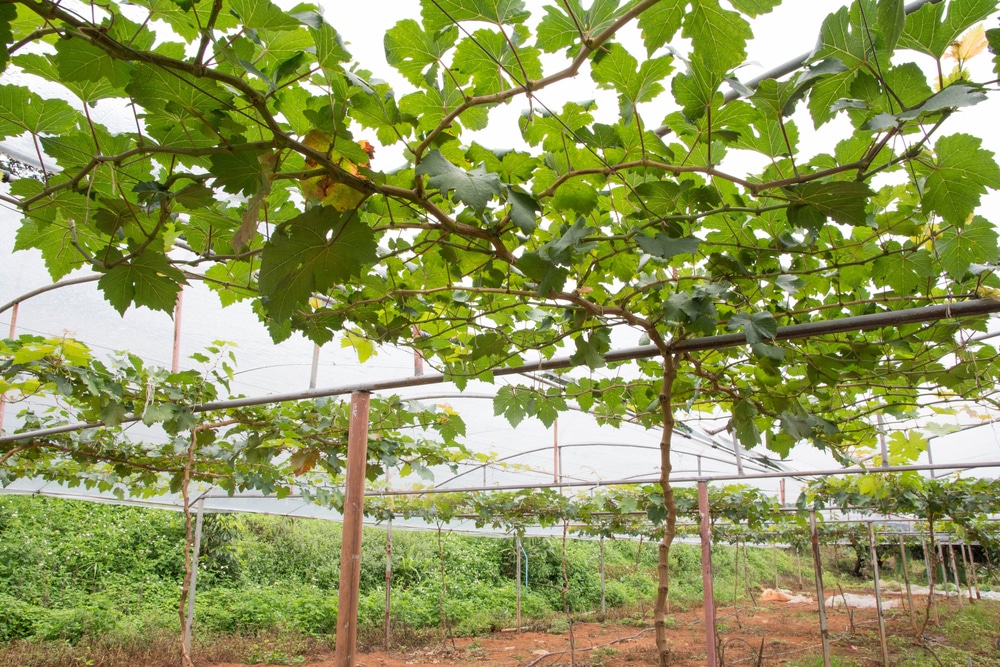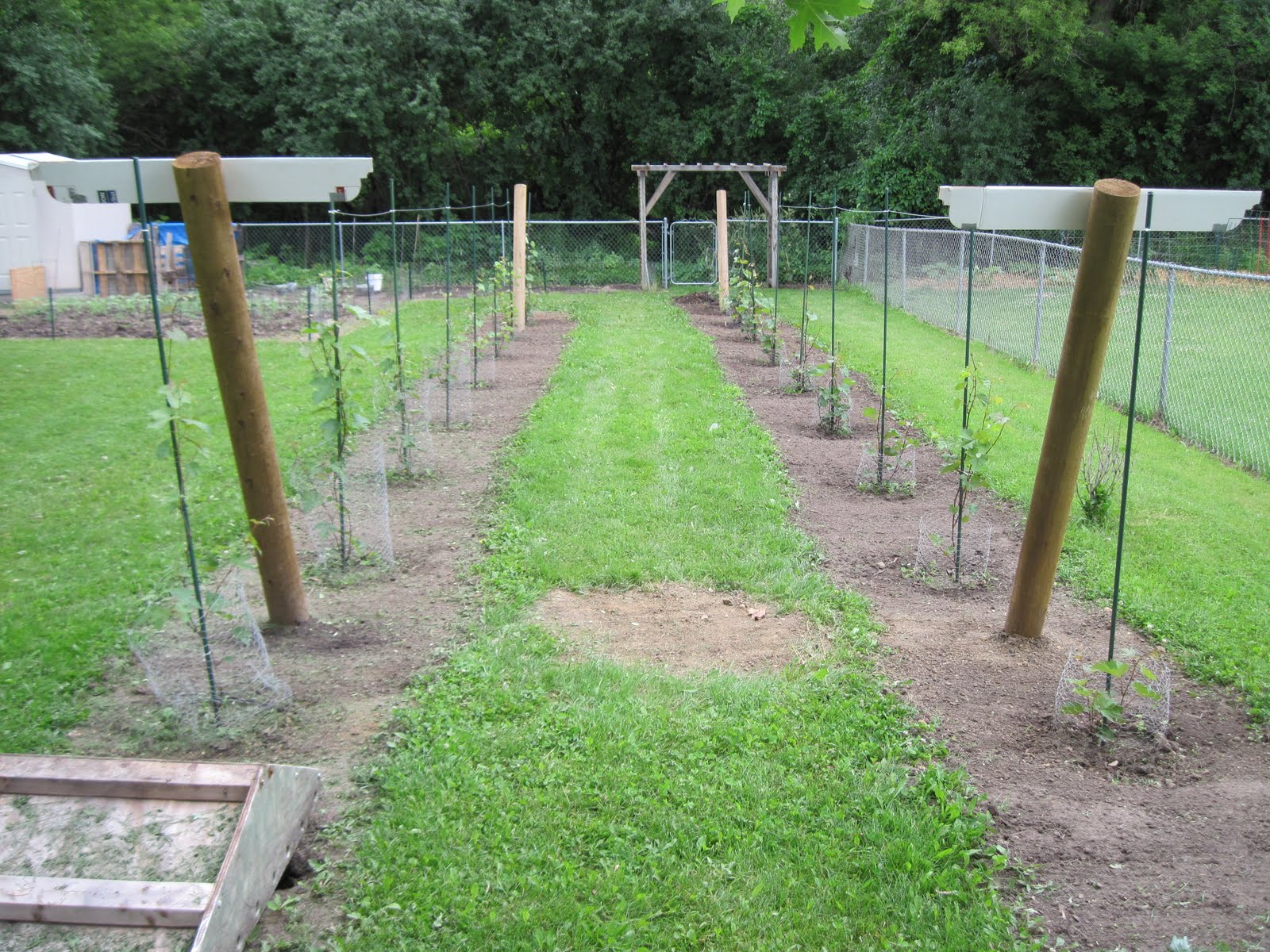
The inverted “V” end assembly is commonly used for high trellises (See Figure 8.1), which consists of a 9 foot (2.7 m) end post (4 ½ to 6 in, 10 to 15 cm diameter), set at approximately a 60 degree angle leaning way from the row rather than upright, and anchored with a screw-type steel anchor. When constructing a trellis system, growers need to consider the height and weight of the vines, resistance to wind, the weight of fruit, and stresses from mechanical harvesting. The purpose of an end assembly is to provide an anchorage point for the wires. Regardless of the trellis system used strong row-end braces are critical to the strength of the trellis.

The staples must be driven deep enough to hold the wires close to post, but with enough play that the wire will slip through when tightening is needed.

In the case of line posts, wires are fastened to the posts with ordinary galvanized staples or inserted in holes drilled in wood line posts. If using just galvanized wire it can be wrapped around the post and twisted several times around as it is stretched to the next post. Wires may be secured to end posts in various ways. High-tensile (HT) galvanized steel wire has a greater tensile strength in the range of 200,000 pounds per square inch or more.

Many different types of wire have been used for vineyard trellising from traditional steel wire to high-tensile (HT) galvanized steel wire. They are either load-bearing wires, which support most of the weight of the vines or used as catch wires, which help orient shoots. Trellis wires generally serve two functions.
Grape trellis install#
Metal trellis posts are an attractive option too because they are relatively easy to handle and to install and their cost can be competitive with wood posts. Wood line posts, which have been commercially injected under pressure with a preservative, are the predominant type of trellis post used in many vineyards today. Posts cut from trees that are not rot-resistant will last no more than ten years. Posts cut from native tree species can be used (e.g., black locust, cedar, etc.) and can be expected to last up to twenty years or more. The choice of line post materials will be influenced by the types of posts available, the post installation equipment, the vine training system, cost, and personal preference. Line posts are a major cost component in the establishment of a new vineyard. Grapevines planted before trellis construction run the risk of being damaged by workers and equipment.

The best time to construct a trellis is during the first growing season. Interior support line (trellis) posts are usually smaller in diameter. This allows the use of high-tensile wire that can be tightened firmly to support the weight of the vines in production. The trellis structure is usually constructed with well-anchored, heavy wood end posts anchored by strong row-end braces. A wide range of materials can be used to construct vineyard trellises. Chapter 8 Trellising Grapevines Trellis Constructionīuilding a good vineyard trellis is very important not only because it is often the single largest cash expense in the establishment of a vineyard but also because it can significantly influence the long-term productivity and profitability of a vineyard.


 0 kommentar(er)
0 kommentar(er)
